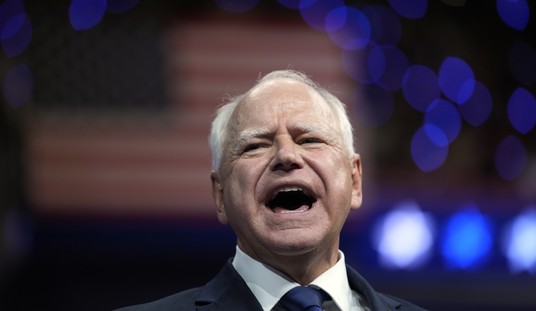The jobs report for June shows another gloomy month in the US economy. Job growth amounted to a disappointing 80,000, below analyst expectations of 90-100K, while the jobless rate remained the same at 8.2%:
Nonfarm payroll employment continued to edge up in June (+80,000), and the unemployment rate was unchanged at 8.2 percent, the U.S. Bureau of Labor Statistics reported today. Professional and business services added jobs, and employment in other major industries changed little over the month. …
In June, the number of long-term unemployed (those jobless for 27 weeks and over) was essentially unchanged at 5.4 million. These individuals
accounted for 41.9 percent of the unemployed. (See table A-12.)Both the civilian labor force participation rate and the employment-population ratio were unchanged in June at 63.8 and 58.6 percent,
respectively. (See table A-1.)
This is only a bare improvement over last month’s report, with its addition of 77,000, an upward revision from the report a month ago, which had May at 69,000. The average monthly job growth has been 75,000 over the last three months — when we need 125K-150K to keep up with population growth. It’s a measure that shows us going backwards … again.
The bad news gets even worse when looking at combined unemployment and underemployment, as measured by U-6. That measure had dropped to a years-long low in March and April of 14.5%, but now has ticked upward two months in a row, and is back to 14.9%. Joblessness among African-Americans jumped by 184,000 and the rate shot up from 13.6% to 14.4%, the highest it has been since December 2011.
Update: CNBC notes that the June report makes the second quarter of 2012 the worst hiring period in two years:
With yet another month of weak employment growth, the second quarter marks the weakest three-month period in two years.
May’s weak initial 69,000 report was revised upward to 77,000, which made the June number essentially flat.
There were a few bright spots: The overall work week edged higher by 0.1 hour to 34.5 hours and average hourly earnings grew 6 cents to $23.50.
But it was an otherwise dismal report that will up the stakes in the race between President Obama and Republican challenger Mitt Romney.
Dismal, indeed. No one can pretend that the Q2 figures are some sort of hiccup. We are decelerating, and we’re decelerating from stagnation levels, which leaves us very few options as to the eventual destination.
The Associated Press also reports on the weakness of the economy:
U.S. employers added only 80,000 jobs in June, a third straight month of weak hiring that shows the economy is struggling three years after the recession ended.
The Labor Department said Friday that the unemployment rate was unchanged at 8.2 percent.
The economy has added just 75,000 jobs a month in the April-June quarter. That’s one-third of 226,000 a month created in the first quarter. Job creation is also trailing last year’s pace through the first six months of 2012.
Again, the direction is clear, as is the destination, unless we change direction on economic policy. That is, of course, why we have elections.
The AP report offers this curious analysis:
A weaker job market has made consumers less confident. They have pulled back on spending, even though gas prices have plunged.
I think they have this backwards. Gas prices have dropped significantly because demand has fallen.
Update II: This is a good time to remind people of the implications of Barack Obama’s immigration policy change this month. The pledge to issue work permits means that we may potentially add 1.2 million workers to the workforce over the next two years. That means we will have to add jobs at a rate closer to 200,000 per month just to keep up with population growth and the policy change.
Update III: The AP article also reports that one-third of the job gain came from temp hires. That may or may not be a bad thing; temp hires usually presage some expansion, but that’s something you want to see more toward the beginning of a recovery than three years into it. At this stage, and with these low overall numbers, it looks a lot more like bet-hedging.
Update IV: Here is a graph of the U-6 measure since the BLS began reporting it in 1994:
The U-6 level has dropped relatively little in this recovery. In 1994, a much lower level contributed to a landslide Republican midterm victory. In 2004, George W. Bush was considered vulnerably on the economy with a much lower U-6 level — remember the Democratic Party nominee John Kerry pontificating about the “jobless recovery”? With the U-6 ticking back upward and the civilian population participation rate flatlining near its 30-year low, this indicates that American voters may be itching for a big change in economic policy.
Update V: In case you missed the news when it broke, here’s what it looked like:
John Harwood points out that the public sector only lost 4,000 jobs, so the problem is not a lack of government jobs, contra Obama.









Join the conversation as a VIP Member